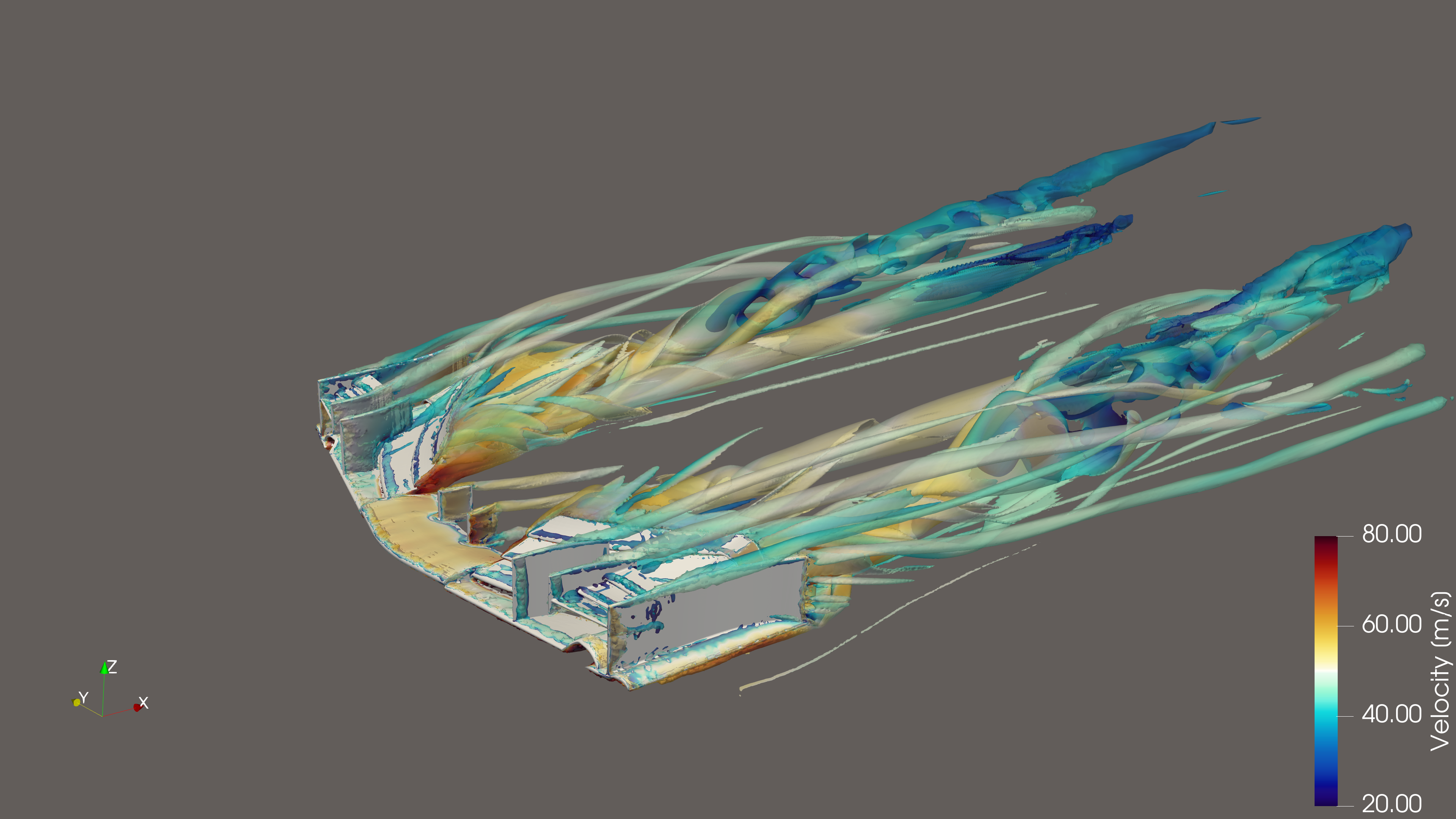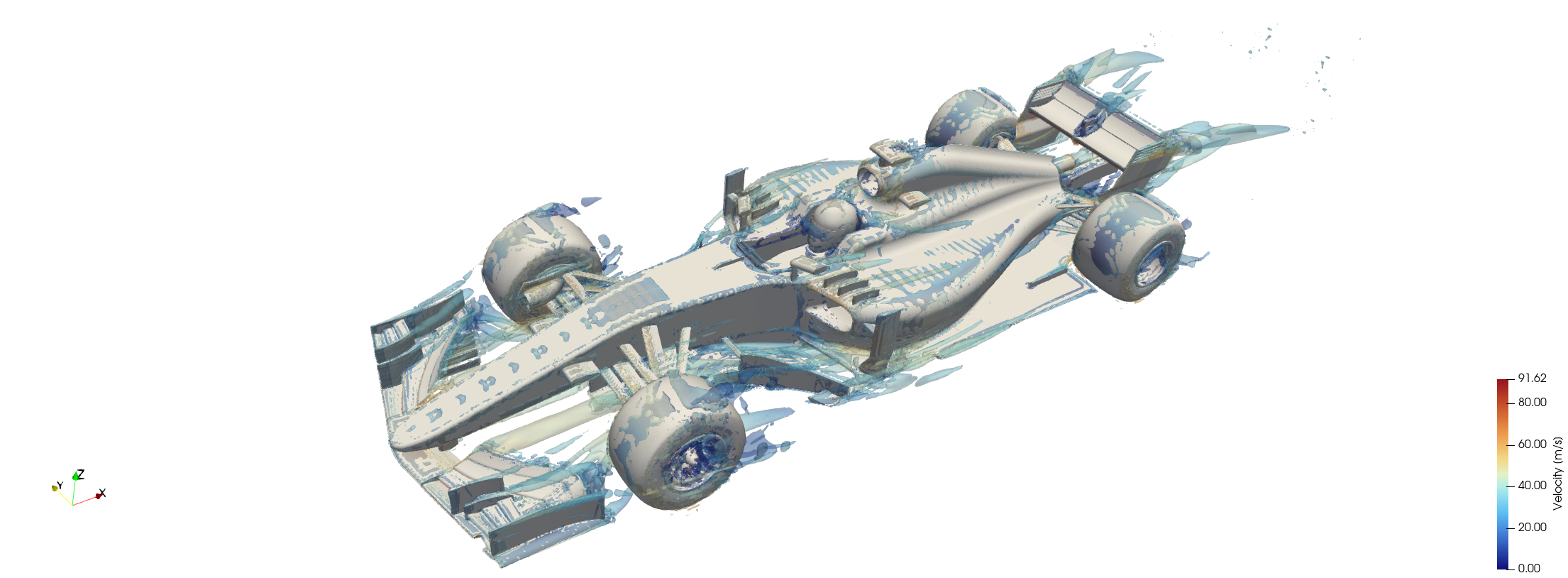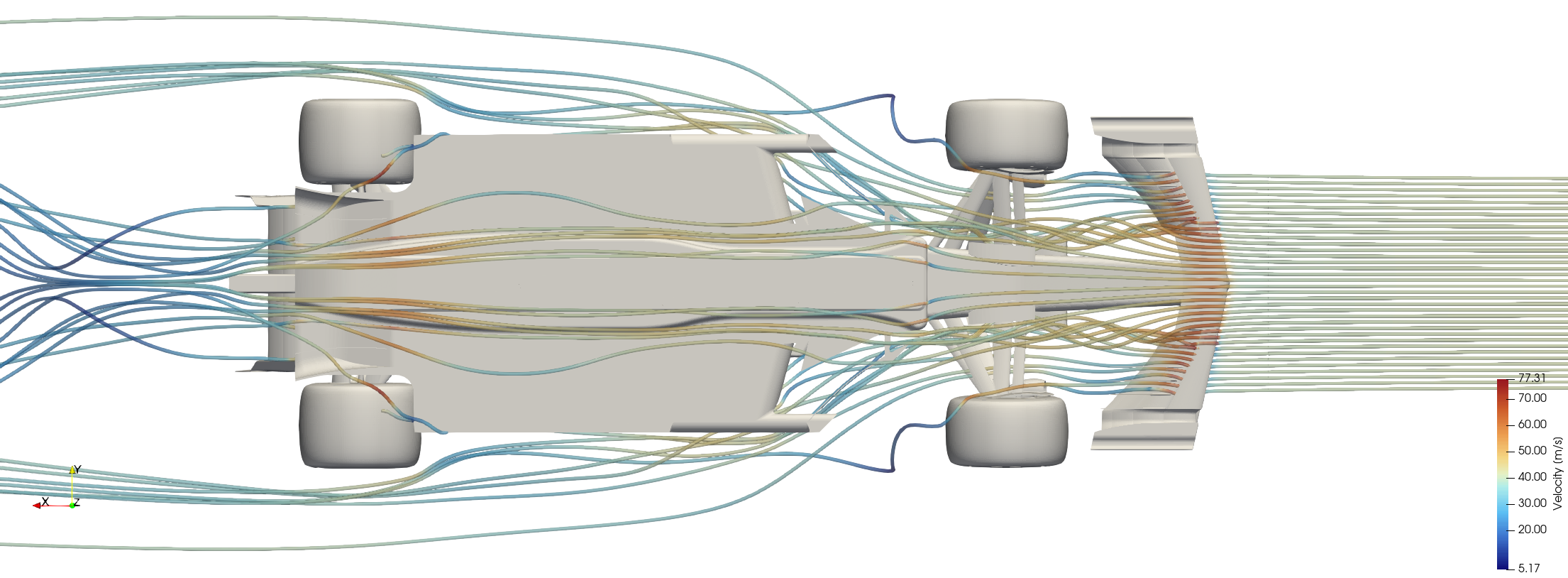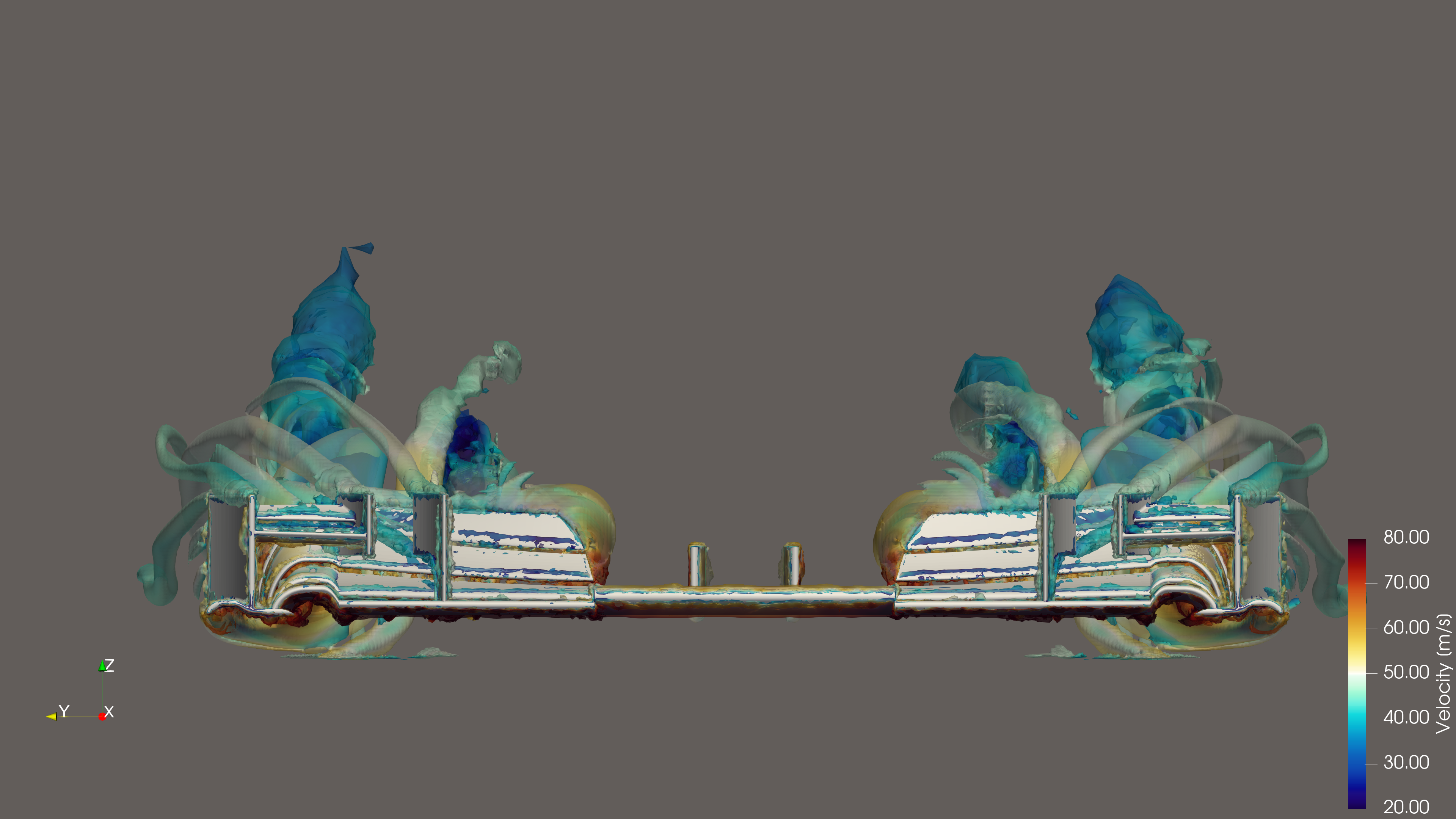CFD Analysis of 2017 PERRINN F1 car

This ongoing project involves conducting a comprehensive CFD analysis of the open-source 2017 PERRINN F1 car to better understand its aerodynamic performance. The car was simulated in a straight line condition at 50 m/s using SimScale, with the wheels and drive shaft modelled under rotating wall boundary conditions. The domain was set up symmetrically, and the farfield boundaries were assigned a slip condition. The radiators were represented using Darcy-Forchheimer coefficients.
The mesh contained around 15 million cells near the upper limit of what SimScale can handle for this geometry. Critical areas were refined to capture important aerodynamic features, particularly the Y250 vortex (which played a key role in the 2017 era of F1 aerodynamics), as well as the floor, tyre outwash, and barge boards. The overall aerodynamic efficiency was calculated to be 2.25.

Post-processing was carried out in ParaView. An isosurface of the Q-criterion at 20,000, colored by velocity, showed relatively weak vortices an unexpected result for this car. Additionally, high wall Y+ values suggest that the coarse mesh may be reducing the simulation’s accuracy. To compare results, a separate simulation was run on just the front wing. This time, an isosurface of the Q-criterion at 30,000 (again colored by velocity) showed much stronger vortices from the front wing alone. However, this setup omitted the nose and the front tire wake, so any resulting values are likely higher than what would be seen if the entire car were modeled.
Next steps include rerunning the full-car simulation in Star-CCM+ at a finer mesh resolution, testing different ride heights, modelling brake ducts, and exploring other running conditions. Planned improvements also involve modifying the aerodynamics in accordance with publicly available technical regulations to study their effects.


